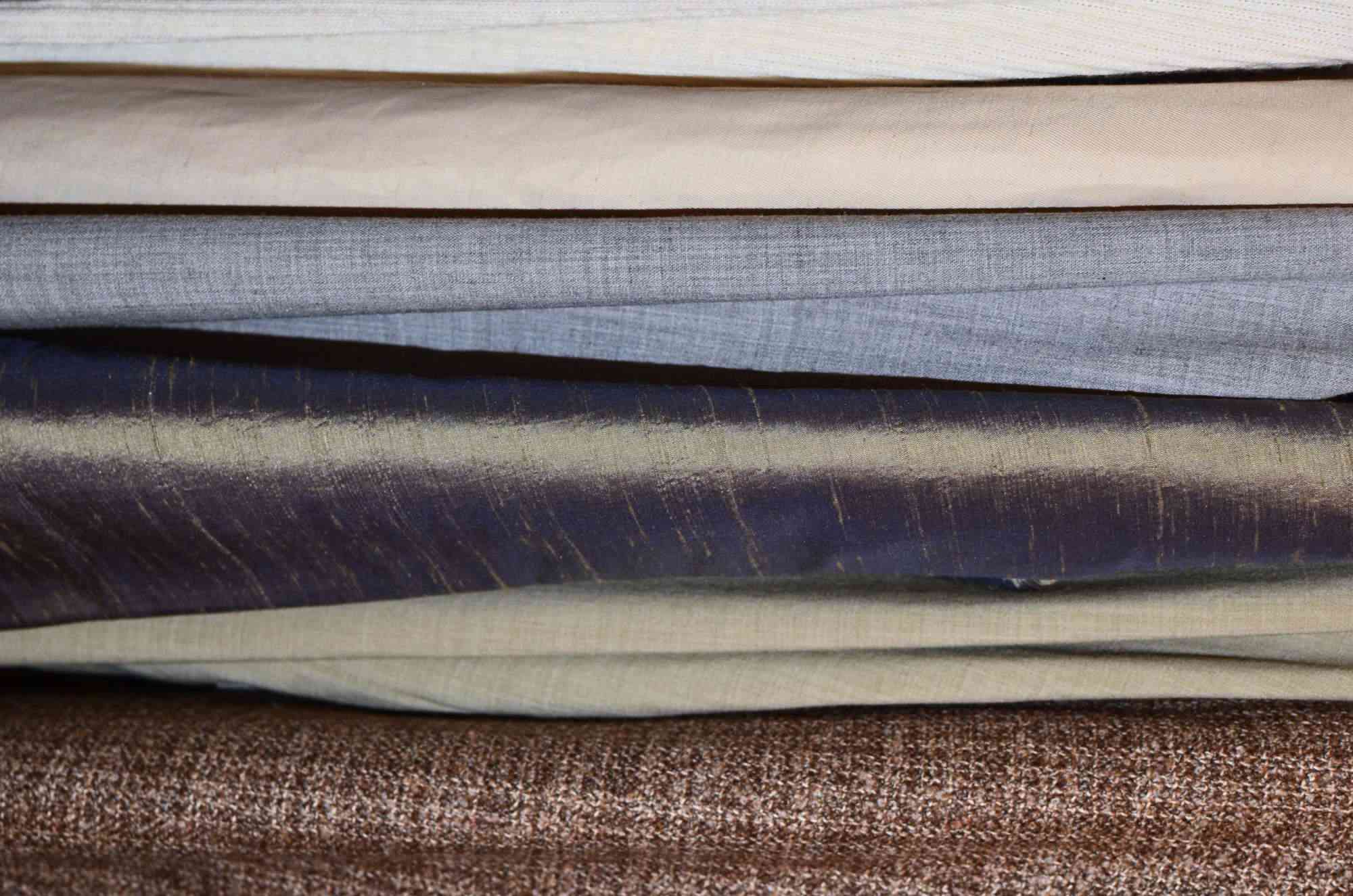All fabrics are classified by their construction and content. Fabric construction is how the fabrics are assembles from yarns or threads. The three main construction types are woven fabrics, knitted, and non-woven fabrics. Fabric content or composition, on the other hand, is the material that constitutes fabrics. This post summarizes fabrics by their content.
You can find types of woven fabric in this post: Three Main Types of Woven Fabric. I will be publishing knowledge-base articles on knitted and non-woven fabric types soon. Subscribe to my newsletter to receive notifications of new posts and my store discounts.
[wpforms id=”1352″]For now, let’s review fabric and yarn classification by composition.
Yarn & Fabric Classification by Content
The two types of textile fibers are natural and artificial (man-made) fibers. Natural fibers come from animals and plants while artificial fibers are synthesized from petroleum*, polysaccharides, proteins, and their blends.
* As a proponent of sustainability and transparency, I focus on natural fibers. I do not cover petroleum-based synthetic fibers in terms of their production and the fabrics made from them. However, petroleum synthetics are included in this classification to make the list complete and to know which materials to avoid when shopping for natural fabrics and clothing.
Natural Textile Fibers
Fibers grown in nature are found in animals and plants.
Animal Fibers (Protein Fibers)
| Wool | Silk |
|---|---|
| Camelids: Alpaca, Guanaco, Llama, Vicuna, Camel (Dromedary, Bactran, and Wild | Mulberry |
| Goat: Mohair, Cashmere, Orenburg | Eri |
| Sheep: Merino, Rrambouillet, Shetland, etc. | Tussar |
| Rabbit: Angora | Muga |
| Yak | Ahimsa |
| Quivit: muskox | |
| Chiengora: dog |
Plant Fibers (Carbohydrate Fibers)
| Seed | Bast | Leaf |
|---|---|---|
| Cotton | Flax | Manila |
| Kapok | Hemp | |
| Coir | Jute | |
| Kenaf | ||
| Ramie |
Synthetic Fibers
Fibers synthesized in a lab or manufacturing facility from carbohydrates, protein, or petroleum, and their blends. These fibers and fabrics made from them are also known as synthetics.
Regenerated Carbohydrate (Polysaccharide Fibers)
| Regenerated Cellulose |
|---|
| Bamboo and tree wood pulp: viscose (Rayon), modal, lyocell (Tencel) |
| Cotton waste: Cupro |
| Acetate: diacetate (acetate), triacetate |
Regenerated protein (Amino Acid Fibers)
| Animal-Based | Plant-Derived |
|---|---|
| Milk fiber (a blend of milk protein (casein) and acrylonitrile* (petroleum-based synthetic fiber used to make acrylic)) was produced in Europe and the US in 1930s. | Arachin (groundnut or peanut) |
| Aralac, Lanatil and Merinova | Soy |
| Azlon (casein copolymer (25%-60%) grafted with 40%-75% acrylic monomers, of which at least half is acrylonitrile, has been developed in Japan under the tradename Chinon.) | Zein (maize, corn) |
Petroleum-Based Polymers
| Petroleum-Based |
|---|
| Aramid |
| Polyamide: Nylon |
| Polyester |
| Polyisoprene |
| Polymethylene urea |
| Polyolefin (olefin): polyethylene, polypropylene |
| Polyurethane: segmented (spandex), non-segmented |
| Polyvinyl derivatives: acrylic, anydex, chlorofiber (polyvinyl chloride, polyvinyldenechloride (saran)), fluorofiber (PTFE), Lastrile, Modacrylic, Nitrile, Novoloid, Polystyrene, Trivinyl, Vinylal (acetylated vinyl alcohol) |

